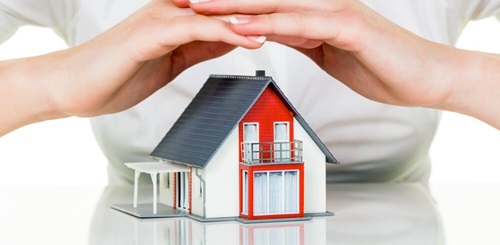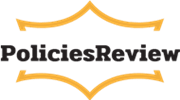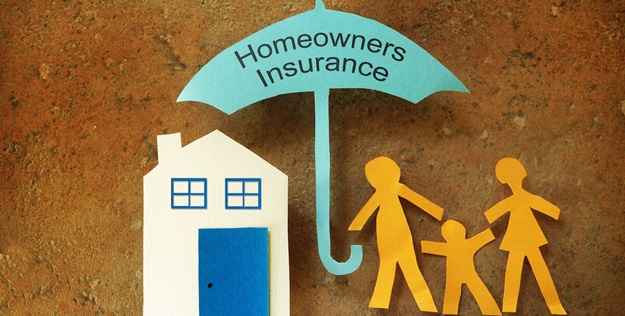There are different kinds of homeowner’s insurance for various needs, from basic coverage like HO-1, which only covers certain risks, to complete plans like HO-5, which covers many things but only some things. Each type is designed to cover a different kind of home or ownership situation, so landlords, renters, and building owners can all get the coverage they need.
8 Different Types Of Homeowners Insurance
HO-1 Homeowners Insurance Policy
HO-1 plans cover only ten named problems, or “perils.” They are the most basic type of homeowner’s insurance. Some of these are:
- Damage caused by vehicles (not your own).
- Damage caused by aircraft (not your own).
- Fire or lightning.
- Volcanic eruption.
- Windstorm or hail.
- Riot or civil commotion.
- Vandalism or malicious mischief.
Most other homeowner’s insurance plans cover 16 known risks, so this is the most minor type of home insurance. Personal property, insurance, and other essential types of security are usually not covered by HO-1. It only covers the main building of your home.
HO-1 policies pay out the total cash value of your home, considering how much it has lost in value over time. That means the insurance might need to cover more to fully pay to rebuild your home at the present costs of goods and labor.
HO-2 Homeowners Insurance Policy
An HO-2 policy is a type of homeowner’s insurance that covers 16 known risks and continues where a HO-1 policy leaves off. Along with the ten named risks in the HO-1 policy, this also includes the following:
- Sudden, accidental damage caused by artificially generated electrical current.
- Weight of snow and ice.
- Falling objects.
- Accidental overflow or discharge of water or steam.
- Bulging or cracking is caused by a sudden and accidental event.
- Freezing of plumbing or air conditioning.
In case of insured loss, HO-2 insurance also covers things other than building your home. These are the six things that HO-2 insurance covers.
- Dwelling: It pays to rebuild your house and any built-in additions, like a deck.
- Other buildings: It pays to construct different structures on your land, such as a shed or gazebo.
- Personal property: It pays to fix or replace your clothes, furniture, and other items.
- Loss of use: Gives money for extra living costs (ALE) over and above what you usually spend on your home, like a hotel stay and meals out while your house is being fixed.
- Personal liability: Covers property damage and medical costs if you’re at fault, such as if your dog bites a park goer. If someone sues you over something, liability insurance will pay for your lawyer fees, settlements, and court costs.
- Medical bills for other people: If someone gets hurt in your home, it covers their small medical bills up to $5,000, no matter who was at fault.
Actual cash value plans for HO-2 homeowners include a loss in the money you get when you file a claim for damage to your home or items.
HO-3 Homeowners Insurance Policy
Most people who have home insurance have HO-3 coverage. They cover the same six things as HO-2 insurance but use an “open peril” approach for your home’s construction. This means that unless it says otherwise, all risks or types of loss are covered. Home insurance policies with HO-3 ratings cover the same 16 types of damage to your personal belongings as policies with HO-2 ratings. These are some exceptions:
- Damage from earthquakes.
- Flood damage.
- Pest infestations.
- Back-ups of water, drains, or sewers.
- War and nuclear hazards.
- Wear and tear.
To get coverage for the types of damage that aren’t covered by your HO-3 home insurance, you can add riders or extra coverage. When you get HO-3 insurance, your home is covered at its replacement cost value. You’ll be paid the market price if you need to make fixes.
But, just like with HO-2 insurance, your items are covered at their real cash value, meaning the claim payout considers how much they have lost in value. For an extra fee, you can get cover for the total cost of replacing your things.
HO-4 Homeowners Insurance Policy

People who rent houses, apartments, or condos can get security from HO-4 plans, also called renters insurance. This kind of insurance doesn’t cover the home itself; owner insurance usually takes care of that. The following types of damage are covered by renters insurance:
- Loss of use coverage.
- Personal property coverage.
- Liability coverage.
- Medical payments to others.
Your things are covered by the same 16 risks as in HO-2 and HO-3 insurance, and their total cash value is paid out. Like with HO-3 plans, you can increase the amount of coverage for your personal property. This way, your things will be covered at their replacement cost value, and you’ll get paid the amount it would cost to buy new ones right now.
Since you don’t own the land and don’t have a financial reason to protect it, renters insurance doesn’t cover the house, any buildings connected to it, or any other structures on the property.
HO-5 Homeowners Insurance Policy
The most complete type of home insurance is a HO-5 policy, also known as comprehensive coverage. It pays to rebuild your home and get new things for your items if they get damaged by something that isn’t on the list of exclusions, like flood or earthquake damage.
When you get a comprehensive homeowner’s policy, it covers the cost of rebuilding your home and your belongings, not their cash value. This means that you’ll get paid for fixes at the prices that are acceptable today. It also covers the same four things that HO-2 and HO-3 insurance do: damage to other buildings, loss of use, responsibility, and hospital bills for different people.
HO-6 Homeowners Insurance Policy
An HO-6 cover is a type of home insurance for people who own a house or co-op. If you live in a condo, your association will have a “master insurance policy.” This is what all condo users in the building pay for.
Master plans come in different forms, but they usually pay to fix up the outside of the apartment building and any common areas. Different master plans cover various amounts of things. The housing coverage you need in your HO-6 insurance will depend on how thorough your master policy is. This is because both are meant to work together.
If you change your home after buying it, your HO-6 coverage will pay to fix the walls, floors, ceilings, and personal belongings. HO-6 plans also cover everyday things like loss of use, responsibility, and paying for other people’s medical bills.
HO-7 Homeowners Insurance Policy
An HO-7 program is made for people who own mobile or manufactured homes. HO-7 home insurance plans work just like HO-3s. Some insurance companies may only cover your mobile home and its contents against specific named perils.
But if you go with a particular home insurance company, you can get an open peril policy for the mobile home’s frame and coverage for 16 named dangers for your things. If your open hazard insurance doesn’t name a restriction, it will cover any damage to the frame of your mobile home.
HO-7 plans cover other buildings, loss of use, responsibility, and hospital bills for different people. These homeowner’s plans cover built and mobile homes, sectional homes, modular homes, and trailers. The buildings must be fixed to be covered.
HO-8 Homeowners Insurance Policy
Home insurance policies with HO-8 are made for older houses with historic features. They cover the same ten named dangers as HO-1 policies. If you own an old house, you might not be able to get HO-3 home insurance, which is the most common type of home insurance. This is because old and historic homes are often made with old or vintage materials that are hard to find and replace. This can make rebuilding the house to its original state very expensive.

